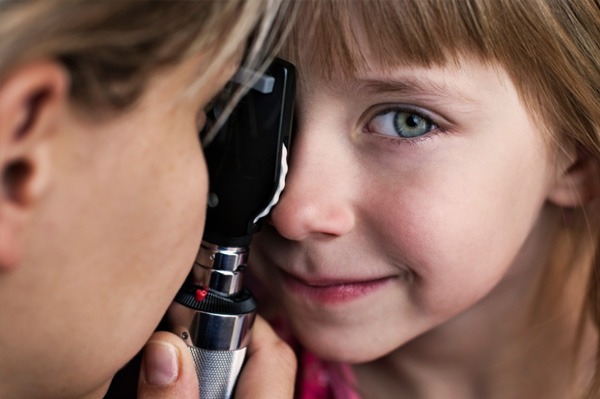Digital glasses help children with lazy eye

Yvette Brazier, Medical News Today
Lazy eye, also called amblyopia, remains the most common cause of visual impairment in children.
Amblyopia is poor vision in an eye that did not develop normally during early childhood. It can occur when one eye is much more nearsighted than the other, or when one eye wanders or strays inward.
The child needs to receive treatment by the age of 8 or so while their eyes and brain are still developing to prevent blindness in the weaker eye.
Unfortunately, it is difficult for both parents and ophthalmologists to persuade children to comply with lazy eye treatments like eye patches or medicated drops, due to discomfort and social stigma.
A recent study found that 1 in 4 children feel anxious before using eye drops, and nearly 15% refuse to take them at all.
Both eye drops and eye patches work based on the occlusion method, by blocking vision in the eye with the best sight, and so forcing the brain to rely on the so-called lazy eye.
During the process, vision improves, though many children will still need glasses to correct their eyesight.
Digital glasses combine visual correction and occlusion
In comparison, the specially designed electronic glasses combine vision correction and occlusion. The lenses can be filled to fit a child’s vision prescription.
Because the lenses are liquid crystal display (LCD), they can also be programmed to turn opaque, occluding vision in the left or right eye for different time intervals, acting like a digital patch that flickers on and off.
This “digital patch” is the first new effective treatment for lazy eye in half a century.
Researchers at the Glick Eye Institute at Indiana University recently tested the effectiveness of occlusion glasses compared with eye patches in a randomized clinical study.
They recruited 33 subjects with lazy eye, aged 3-8, who wore spectacles to correct their vision. One group wore an adhesive patch for 2 hours a day. The other wore Amblyz™ occlusion glasses for 4 hours daily.
In the study, the lens over the lazy eye switched from clear to opaque every 30 seconds. After 3 months, both groups of children showed the same amount of improvement in the lazy eye, gaining two lines on a reading chart.
Dr. Daniel Neely, a pediatric ophthalmology professor at Indiana University who led the study, says:
“When you talk to adults who underwent childhood treatment for amblyopia, they will tell you that wearing a patch was the worst thing ever. With these electronic occlusion glasses, the child learns that the lens will be clear again in just a few seconds so they may be more cooperative with the treatment. For parents who have struggled with drops and patching, this could be a great alternative.”
The US Food and Drug Administration (FDA) has approved the Amblyz occlusion glasses as a medical device. They are available in the US from eye care professionals for around $450.
Medical News Today recently reported that watching movies can help children with lazy eye.
In a recent Spotlight feature, we also spoke to the creator of the world’s first fluid-filled self-adjustable eyeglasses that could help millions in children with nearsightedness in developing countries.












